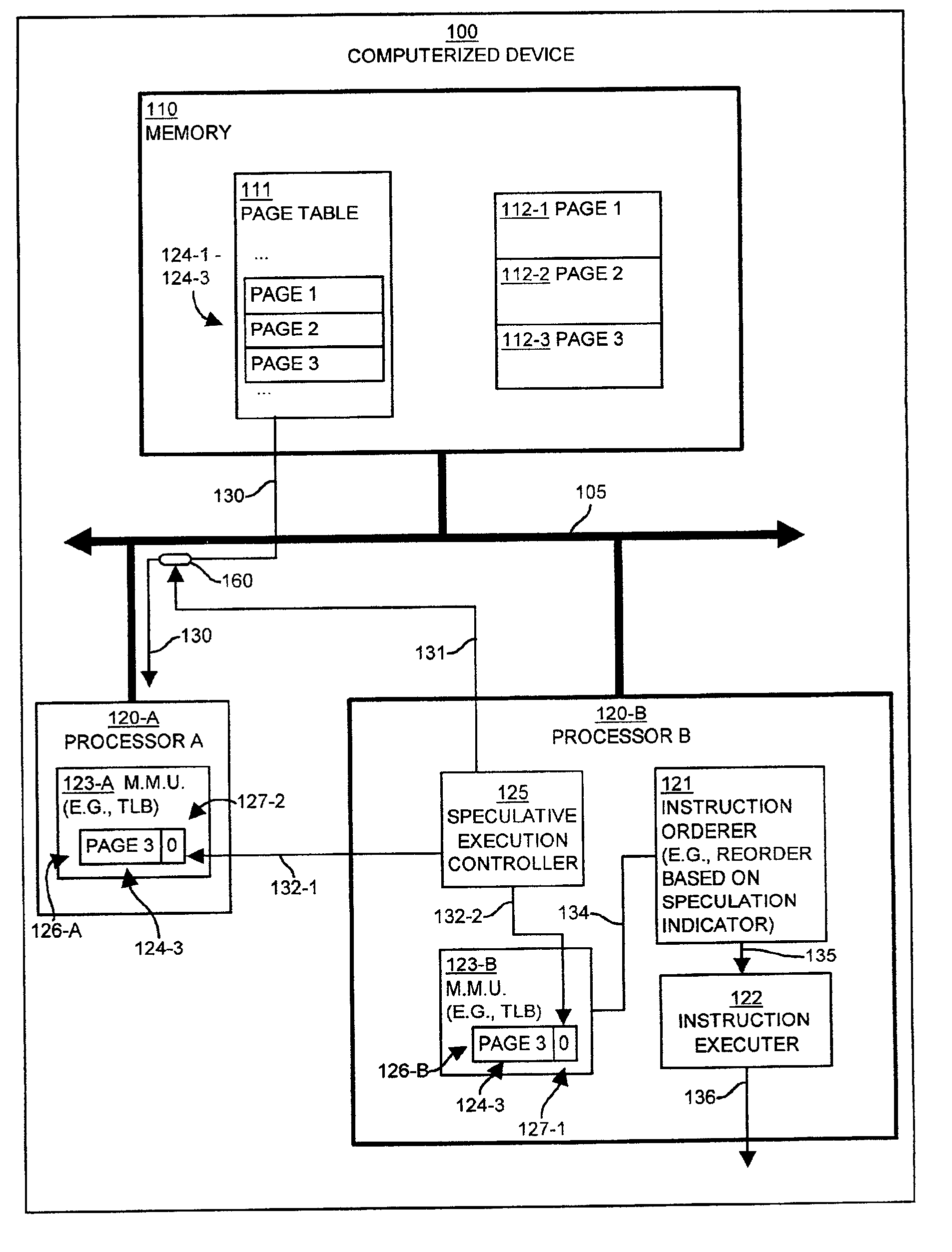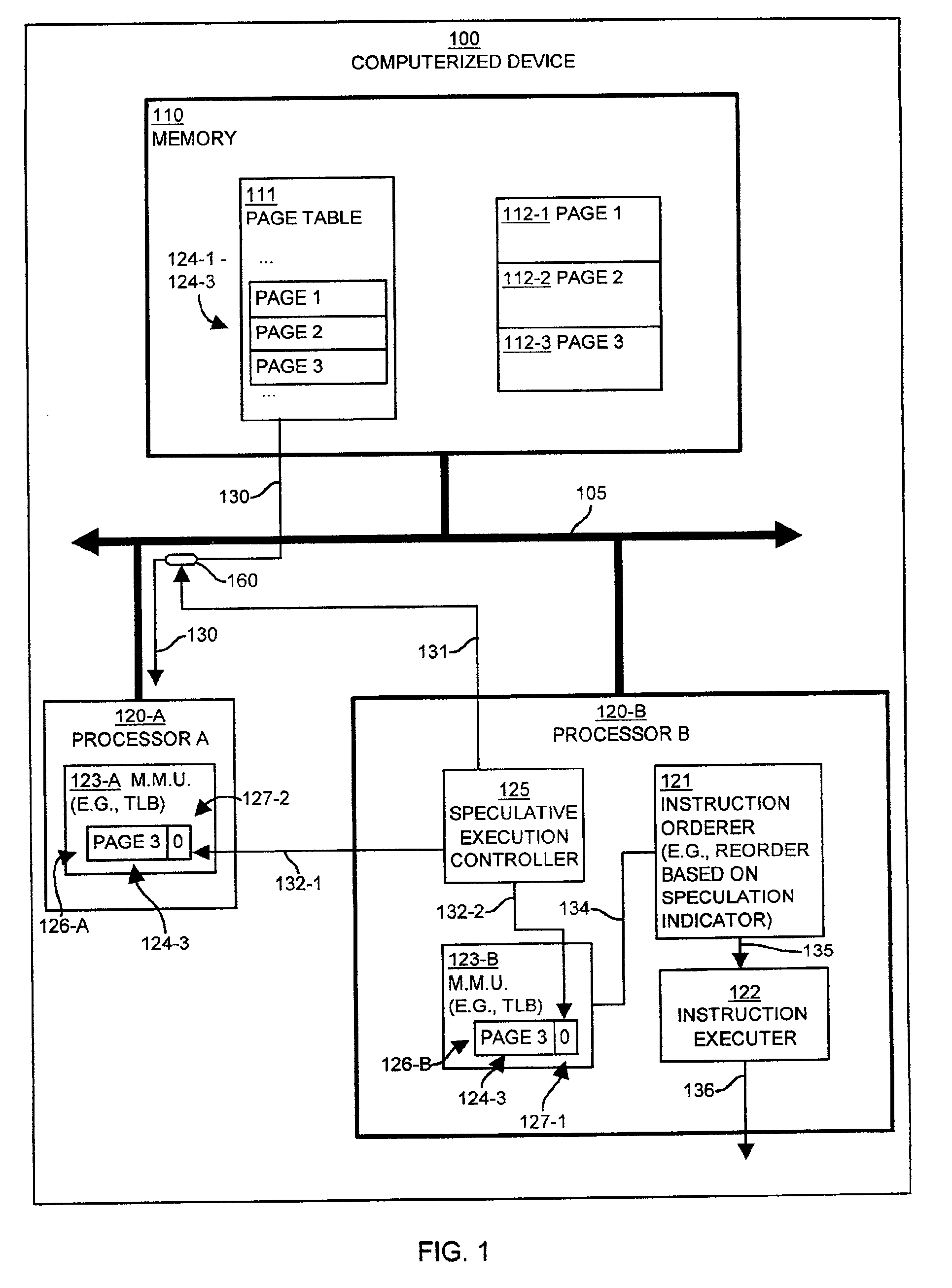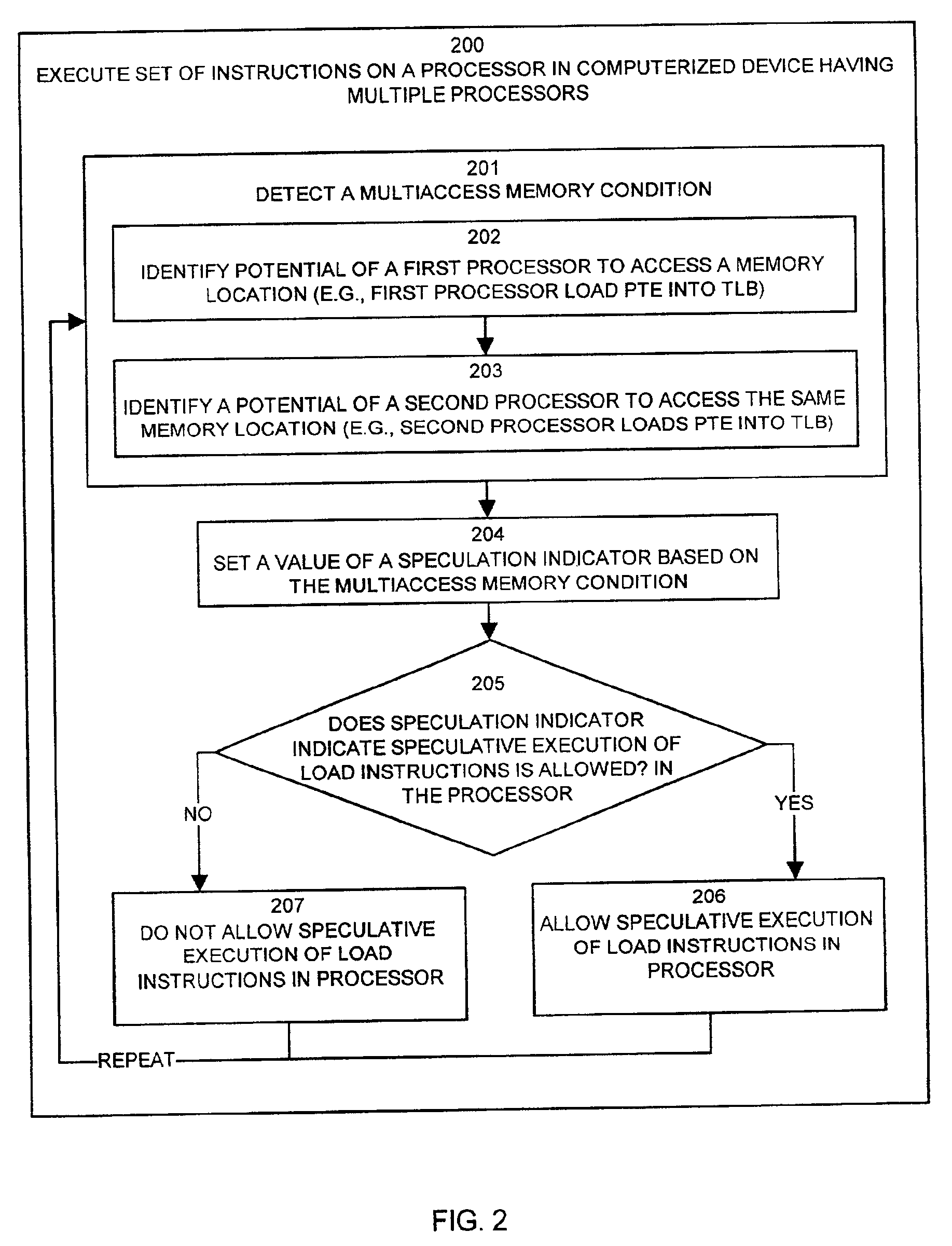Methods and apparatus for controlling speculative execution of instructions based on a multiaccess memory condition
a multi-access memory and condition technology, applied in the field of systems for executing instructions, can solve the problems of consuming resources, processing cycles and memory bandwidth, and consuming conventional techniques and mechanisms employed in processors and compilers to control speculative reordering and execution of instructions (i.e., speculation)
- Summary
- Abstract
- Description
- Claims
- Application Information
AI Technical Summary
Benefits of technology
Problems solved by technology
Method used
Image
Examples
Embodiment Construction
Embodiments of the invention provide mechanisms and techniques for controlling speculative reordering and execution of instructions, such as load and store instructions, in a computerized device. Embodiments of the invention provide a speculative execution controller that is capable of controlling speculative execution of instructions in the processor by allowing or not allowing the processor to speculatively reorder and execute instruction sequences depending upon the value or setting (i.e., on or off, true of false, 1 or 0, or another value) of a speculation indicator set by the speculative execution controller. If the speculation indicator is enabled, is set, or is otherwise in an “on” or “1” or true or first state, the speculative execution controller allows the processor to speculatively execute instructions. Conversely, if the speculation indicator is disabled, is unset, or is otherwise in an “off” or “0” or false or second state, the speculative execution controller does not ...
PUM
 Login to View More
Login to View More Abstract
Description
Claims
Application Information
 Login to View More
Login to View More - R&D
- Intellectual Property
- Life Sciences
- Materials
- Tech Scout
- Unparalleled Data Quality
- Higher Quality Content
- 60% Fewer Hallucinations
Browse by: Latest US Patents, China's latest patents, Technical Efficacy Thesaurus, Application Domain, Technology Topic, Popular Technical Reports.
© 2025 PatSnap. All rights reserved.Legal|Privacy policy|Modern Slavery Act Transparency Statement|Sitemap|About US| Contact US: help@patsnap.com



